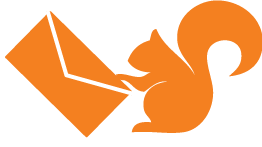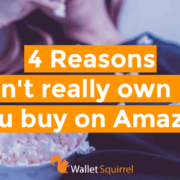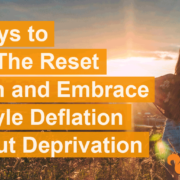How To Avoid PayPal Fees With These 7 Expert Tricks

What Is PayPal?
First, here is a quick recap to explain exactly what PayPal is. PayPal is an online payment system that allows online money transfers and works as an electronic alternative to other methods like checks or money orders.
Millions of people and businesses use PayPal to process their payments. It’s a much easier and more streamlined online payment method as opposed to using credit cards. However, PayPal is not always free to use.
In the United States businesses accepting payment via PayPal are charged a percentage of the sale plus a fixed fee. The fixed fee is 30 cents, and the percentage rate is currently 2.9%.
For example, you invoice a client for $100. The client chooses to pay via PayPal. You will receive $96.80. The fixed fee of 30 cents is deducted plus the 2.9% PayPal fee which works out at $2.90.
How To Avoid PayPal Fees
Avoiding PayPal fees means you can keep more of your hard-earned money for yourself. This section will explain several methods of avoiding or reducing PayPal fees.
1. Ask For Payments Less Often
Getting paid every week is great as it means you have money every week! The downside is that every time you get paid, PayPal is charging you a fee. Remember it’s a 30-cent fee + 2.9% for every amount received from a U.S client. If your client is outside of the U.S, the fixed fee varies, and the percentage charged goes up to 4.4%!
That means for every 100 U.S based clients you are charged $30! If you have clients outside the US, you could be paying even more!
A way to reduce these fees is to ask for payment once a month. Doing this means you only pay the fees once instead of multiple times. What’s better $30 a month or $30 a week? Easy right. Provided you can manage being paid monthly, then it’s a no-brainer!
For example, you are earning $1000 a month. Getting paid weekly could mean you only receive $880 a month after fees are deducted. Switching payments to monthly means you get $970! That’s a huge difference!
These figures are to help you visualize the benefit of being paid less often. What you would actually receive will vary based on the number of clients and where the money is coming from (either U.S or outside). However, the concept doesn’t change. You will keep more of your money by receiving it less often.
2. Be Careful How You Withdraw Money From PayPal
When you withdraw your money from PayPal you could be charged a fee depending on how you withdraw it. The good news is that you can withdraw your money fast and for free by one of two methods.
First, withdraw it directly to your bank account. Bank transfers are fast as they are usually in your account by the next business day at the latest. Getting your money this way means you pay no fees for withdrawal.
The other way to get your money is by getting a PayPal cash card. This works like a debit card at all retailers accepting Mastercard. There is no fee to use the card and you can withdraw cash from an ATM. A PayPal cash card is a free way to get your money quickly and easily.
3. Ask To Be Paid As A Friend Or Family
As you now know any money you are paid from a client will incur a fixed fee plus a percentage of the amount. These charges only apply to money received for goods or services.
If a client chooses to pay you using the friends and family option, then no fees are charged to either party. The client will also avoid PayPal fees, provided payment is made from their PayPal balance, bank account, or a combination.
Personally, this method has worked well for me in the past. When I’ve arranged small design jobs via a member of my blogging Facebook group, we’ve agreed the payment to be handled via the friends or family option to save paying any fees.
To make a payment using the friends or family option you simply need to invoice your client directly using an accounting program or manual spreadsheet. The client can then pay you directly via PayPal. Alternatively, send the invoice via PayPal and ask the client not to pay from the invoice. Instead, they can pay using the friends or family option in their PayPal account.
Please note that there are a couple of potential risks to using the friends and family option. First, there is no payment protection for the person paying the money. If you know each other well this should be fine.
The other risk is that PayPal may close your account if they believe you are exploiting the system. When I’ve used friends and family in the past for design jobs, I’ve only used it with smaller jobs and people I know well. Doing this may be recommended to save paying fees but there is a risk involved.
4. Add PayPal Fees Into Your Quote
Adding PayPal fees into your quote doesn’t reduce the fees, but it does mean you aren’t paying them. For example, you are charging a client $100 for a blog post. You would normally receive $96.80 if they are a U.S based client. However, you could tell them the blog post will cost $105.00 which means you still get $100 after PayPal fees are deducted.
Alternatively, ask your client upfront if they are happy to pay the fees. Make sure this is part of the contract when you are agreeing to the job. When creating the invoice simply add a 3-4% fee to cover any PayPal fees. Remember, make sure the client agrees with this first!
5. Offer Alternative Payment Methods
The simplest way to avoid PayPal fees is by not using PayPal!
Direct deposit is an option offered by lots of companies. The money is usually paid just as fast and there are no fees to pay!
If you don’t want to use direct deposit, then you could use the traditional method of asking for a paper check. This will take longer to get your money but there are no PayPal fees to pay.
A final option to consider is using an invoicing software with inbuilt bank transfers. This means the client can receive the invoice and follow the link to easily make payment. The best thing about this is that you don’t incur any fees!
6. Try PayPal Alternatives
PayPal is not the only online payment system. You could try out one of the many alternatives to receive payments to avoid PayPal fees. This means you won’t pay any PayPal fees! Other fees may apply though so make sure you thoroughly check this out before using other systems.
7. List PayPal Fees As A Tax Deduction
In case you don’t know, PayPal fees can be deducted from your tax return. Doing this means you still have to pay the fees during the year, but your tax bill will be lower! You are simply keeping more of your money another way.
All you need to do is add up all the PayPal fees you have paid through the year. Once you have the total simply include the amount on your Schedule C.
How Much Are The PayPal Fees?
To make money PayPal charges a fee of 2.9% from the total amount of every payment received from the U.S. On top of that, there is also a $0.30 fixed fee for every transaction.
If the funds that are received are from outside the US, the transaction fee goes up to 4.4% of the total amount and the fixed fee varies. The amount of the fixed fee will depend on what country the money is from.
The person that is receiving the money is the one that has to pay any fees. This works in a similar way to paying with a card when you go to the store. The store pays the card issuer a fee for the option of accepting payments by card.
Final Thoughts
PayPal fees can be frustrating as no one likes to see their money go to someone else! However, without fees, PayPal might have to make their money by charging you to have an account.
The good news is that you can reduce the amount of PayPal fees you are paying. Ask to be paid less frequently, build fees into your quote, or ask for payment using the friends and family option. Using these methods can vastly reduce how much you pay in fees every year.
Don’t forget you can avoid fees completely by using alternatives. Direct deposit, paper check, or accepting payment using another online payment system could all be cheaper!

Hey, I’m Chris. I have a degree in Business Economics from the University of Liverpool, own a small fast food business and run LifeUpswing.com. I help people make money, save money, and think about money in a way that will give you back your freedom.









